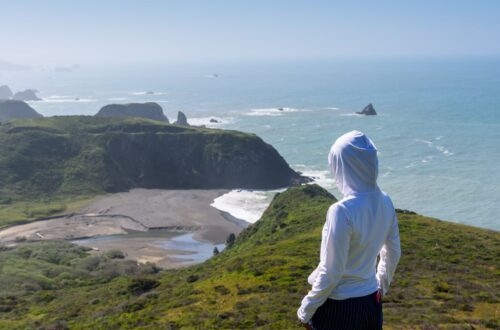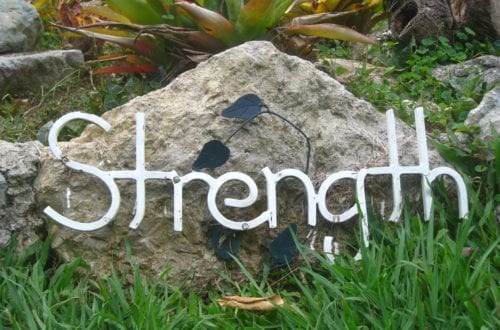
Flexible Feet & Ankles
Early Learning
Many people take notice of their bodies when in pain, taking them for granted unless something doesn’t work quite right. It’s unfortunate, but true. And it is understandable. We aren’t taught how to live in our bodies. With emphasis on thinking and doing and less on the embodiment of living, it makes sense that we are limited in staying ‘tuned in’. We do the best we can with what we have as we grow and learn in our families, communities and cultures. However, none of that is without trouble.
Working as a physical therapist I did have opportunities to learn how to get out of pain and trouble, but it didn’t teach me or show me how to live in my body moment to moment. It took an interest on my part, learning through the Feldenkrais Method and practice, practice, practice. The underlying interest stemmed from desperately wanting to feel better in my life. And there was a draw of fascination that led me down the path. Each time I read a book or lesson that Moshe wrote or taught, I would re-read or replay parts over again, shaking my head in amazement, admiring his genius.
Recently, I did an Awareness Through Movement® lesson that he taught 70 years ago. He described how physicians can tell if a person has heart disease based on how they walk. I cannot say if that is or was true or not, but it caught my interest. He teaches that the timing between breathing and a momentary halt in the arm swing is a clue to heart disease. You bet I will be thinking of that more as I walk around and work with others.
Feet and Ankles
However, the purpose of this post is to write about the agility of the feet and ankles. Standing, walking and running require it. But overuse, poor fitting shoes and stress take their toll on our feet and ankles causing wear and tear.
Sitting on the floor with one ankle crossed over the opposite thigh, I spent an hour, lengthening, bending, and spreading each toe slowly. Changing legs and positions allowed gravity to help my torso and arms lengthen as I listened to the changes in my feet and ankles. The lesson progressed so that my fingers interlaced between each toe, as I pulled both toes and fingers all the way through, snuggly intertwined.
Once finished to my satisfaction, I rested. After standing up and walking around, I marveled, thinking how much the feet are underrated! That one lesson started my passion for the feet and of course the ankles. They go hand in hand. Actually that cliché doesn’t work, or does it? What the heck.
Sensing Pleasure
The next aha came a few years later when I woke to the utmost pleasure in my lower legs following a five day advanced Feldenkrais training. My colleagues and I had worked with each other’s feet and ankles. Similarly, we touched, lengthened, and folded each toe–gently, asking for the tissues to give, without force. Not stopping there, we continued along the length of the leg to the pelvis. Continuing along the skeletal chain to the ribs, we searched for ways to invite the ribs to move the spine and the head. After allowing time to process what was felt, we continued back down along the other side. Thinking about it now, a warm glow settles me into writing.
It was a two and a half hour drive home on the last day. Rather than the typical stiffness when getting out of the car, I still had a sense of lightness; not as profound as before my trip home, but nonetheless noticeable. I had driven this route at least 4 times a year for the previous 5 years. I knew something had changed.
The magic came when I woke the next morning with my lower legs humming. Waking close to dawn, the gentle pulsing and softness in my legs caught my attention in such a way that I buried myself under the covers luxuriating in the pleasure. I chuckled to myself thinking that at my age (mid 50’s at the time) feeling such an openness and aliveness was not your typical middle age attention grabber. How fortunate I was.
Getting Up
Each time we rise from slumber and have the privilege of setting our feet on the floor before we stand, a complex series of adjustments gets made. For the most part we don’t notice the details. Getting out of bed, getting up and getting going is the drill. But between reclining and standing, the skeleton, muscles, brain and nerves get set with their marching orders. Unbeknownst to us, it all happens smoothly until it doesn’t.
Pain or stiffness pulls us back interfering with the “Up and Adam” message that lurks somewhere in our unconscious. Pushing forward, taking Tylenol, limping, we will ourselves to begin the day.
Restore
What would it be like if we could restore ourselves in such a way that our legs become more agile, more alive to the changing surfaces?
Quality shoes are becoming more expensive. Inexpensive shoes are becoming more plastic, smelling of oil. We can’t rely on the shoes we wear to restore our feet to a fluid nimbleness. Heck, we can’t even rely on our shoes not to make our feet hurt more.
What can we do?
Time and Attention
It takes time and attention. How much time? It depends. It depends on pain, interest, commitments, and/or stress. In other words, start with a little every day and see where it takes you. Let curiosity and comfort be your guides. The idea is that you take notice when you are not in pain.
There are a few simple things that you can do that will begin to wake the feet and ankles up to a greater aliveness. All you need is a ‘safe’ place that your attention isn’t needed for a more urgent task.
Where to Begin
Find your foot print: Whether you are sitting or standing, your feet are on some contact with a surface. Imagine that you have ink on the bottom of your feet.
Where is it darker? Lighter? Compare the right foot print to the left. Begin to feel the differences between your two feet. This will be important when you begin to notice your foot prints when walking or running. Take a couple seconds every day, a few times a day to find your ‘foot print’. Do it sitting and standing. And if you are enjoying it and want to do more, see if you can track your foot print for a few steps while walking!
Wiggle the toes: In your shoes, out of your shoes, it doesn’t matter. Sense the outline of each toe. Do they move in groups or individually? Can you feel each individual toe without creating tension somewhere else? Is your jaw relaxed? Do you notice your breathing or prevent your breath from stopping? Don’t use force. Make it light like a kitten playing with a ball of yarn!
Sway: Easy. Side to side. Not a lot, just a little. Like a gentle breeze. Start in sitting to get the feel for it. Swaying calms the nervous system and as calmness filters through, the muscles relax. Believe it or not, swaying in sitting helps your feet and ankles. With your feet flat on the floor, notice how the pressure changes.
Once comfortable in sitting, stand comfortably with your arms hanging down by your sides and your feet a comfortable distance apart. Begin to sway side to side, noticing how the pressure changes under your feet. There may be one foot that feels better than the other. That is not unusual. It is very common.
Then you can begin to sway front and back and then any direction. Just remember go slowly and only as long as you are comfortable. Sit or walk to stay comfortable. This is not about forcing your body to change, it is about noticing differences, what feels comfortable and what you can do to find greater ease.
Enjoy
Taking a bit of time everyday to sense your foot print, wiggle your toes and sway, you will build up your ‘kinesthetic’ awareness so that you can make adjustments more quickly and notice your body before it is in pain. With a regular practice and adding to the mix over time, you will be closer to restoring your feet and ankles to the springs they are meant to be!
Register for the course: Flexible Feet and Ankles




